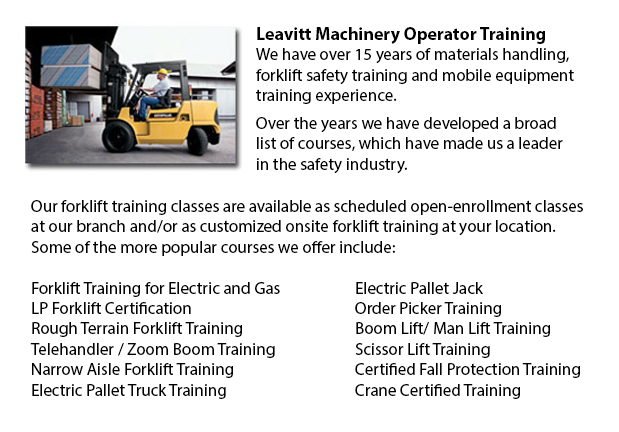
Aerial Lift Training Richmond Hill - Aerial forklifts might be utilized to accomplish certain distinctive tasks executed in hard to reach aerial places. Some of the duties associated with this type of lift include performing routine repair on buildings with prominent ceilings, repairing phone and power lines, lifting heavy shelving units, and pruning tree branches. A ladder might also be utilized for some of the aforementioned jobs, although aerial lifts offer more security and stability when properly used.
There are a lot of versions of aerial lifts available on the market depending on what the task needed involves. Painters sometimes use scissor aerial jacks for instance, which are classified as mobile scaffolding, handy in painting trim and reaching the 2nd story and higher on buildings. The scissor aerial hoists use criss-cross braces to stretch and extend upwards. There is a table attached to the top of the braces that rises simultaneously as the criss-cross braces elevate.
Container trucks and cherry pickers are another type of aerial hoist. They possess a bucket platform on top of an elongated arm. As this arm unfolds, the attached platform rises. Forklifts utilize a pronged arm that rises upwards as the handle is moved. Boom lifts have a hydraulic arm that extends outward and elevates the platform. Every one of these aerial hoists require special training to operate.
Through the Occupational Safety & Health Association, also labeled OSHA, instruction programs are offered to help make certain the workers satisfy occupational principles for safety, machine operation, inspection and repair and machine weight capacities. Employees receive certification upon completion of the course and only OSHA qualified employees should run aerial lifts. The Occupational Safety & Health Organization has formed rules to uphold safety and prevent injury while using aerial lifts. Common sense rules such as not using this machine to give rides and ensuring all tires on aerial hoists are braced so as to hinder machine tipping are mentioned within the guidelines.
Unfortunately, figures reveal that greater than 20 aerial lift operators pass away each year while operating and nearly ten percent of those are commercial painters. The bulk of these mishaps were brought on by inappropriate tie bracing, hence some of these could have been prevented. Operators should ensure that all wheels are locked and braces as a critical safety precaution to stop the device from toppling over.
Additional suggestions involve marking the encircling area of the machine in a visible way to safeguard passers-by and to guarantee they do not approach too close to the operating machine. It is vital to ensure that there are also 10 feet of clearance among any utility lines and the aerial hoist. Operators of this machinery are also highly recommended to always wear the proper security harness while up in the air.
-
Hyster Forklift
Hyster Forklift Training Richmond Hill - As a global leader in forklift trucks, Hyster continually strives for excellence in product quality and safety. However, it began as a producer of lifting machinery as well as winches. Most of its production... More -
Nissan Forklift
Nissan Forklift Training Richmond Hill - Nissan takes immense pleasure in achieving total customer satisfaction, when their consumer is experiencing one of their many products including cars, trucks, and lift trucks. Nissan Motor Co. Ltd is the paren... More -
Scissor Pallet Trucks
Scissor Pallet Truck Training Richmond Hill - Scissor pallet vehicles are made for transporting and lifting individually stacked pallets by integrating a raising mechanism that enables the pallets on the truck to be elevated. This apparatus is a firs... More -
Pneumatic Forklifts
Pneumatic Forklifts Training Richmond Hill - Pneumatic jacks are often called pallet trucks or pump trucks and are widely utilized in warehouses and transport facilities to transport materials on pallets. Pneumatic jacks comprises a set of steel blad... More -
Reach Trucks
Reach Truck Training Richmond Hill - Reach Trucks are industrialized equipment utilized for loading and storage in some companies that maintain storage of cargo to finished goods on a pallet which are then placed into lofty shelving units. This loadi... More

Forklift Training Richmond Hill
TOLL FREE: 1-888-254-6157
Richmond Hill, Ontario
forklifttrainingrichmondhill.com
Email Us
About Us


